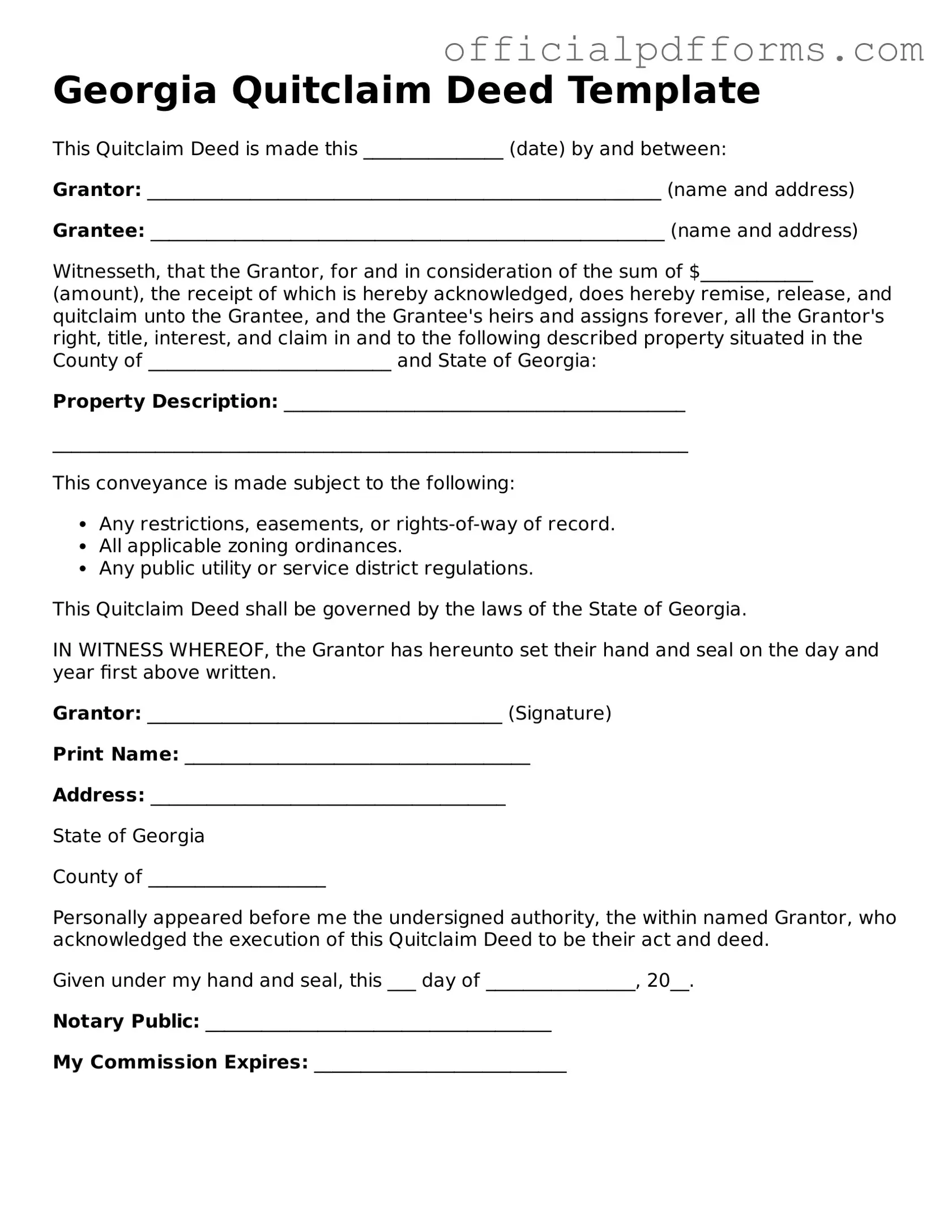Printable Georgia Quitclaim Deed Template
A Georgia Quitclaim Deed is a legal document that allows a property owner to transfer their interest in a property to another person without making any guarantees about the title. This form is commonly used in situations where the parties know each other, such as between family members or friends, and want to simplify the transfer process. If you're ready to fill out the form, click the button below.
Access Form Online
